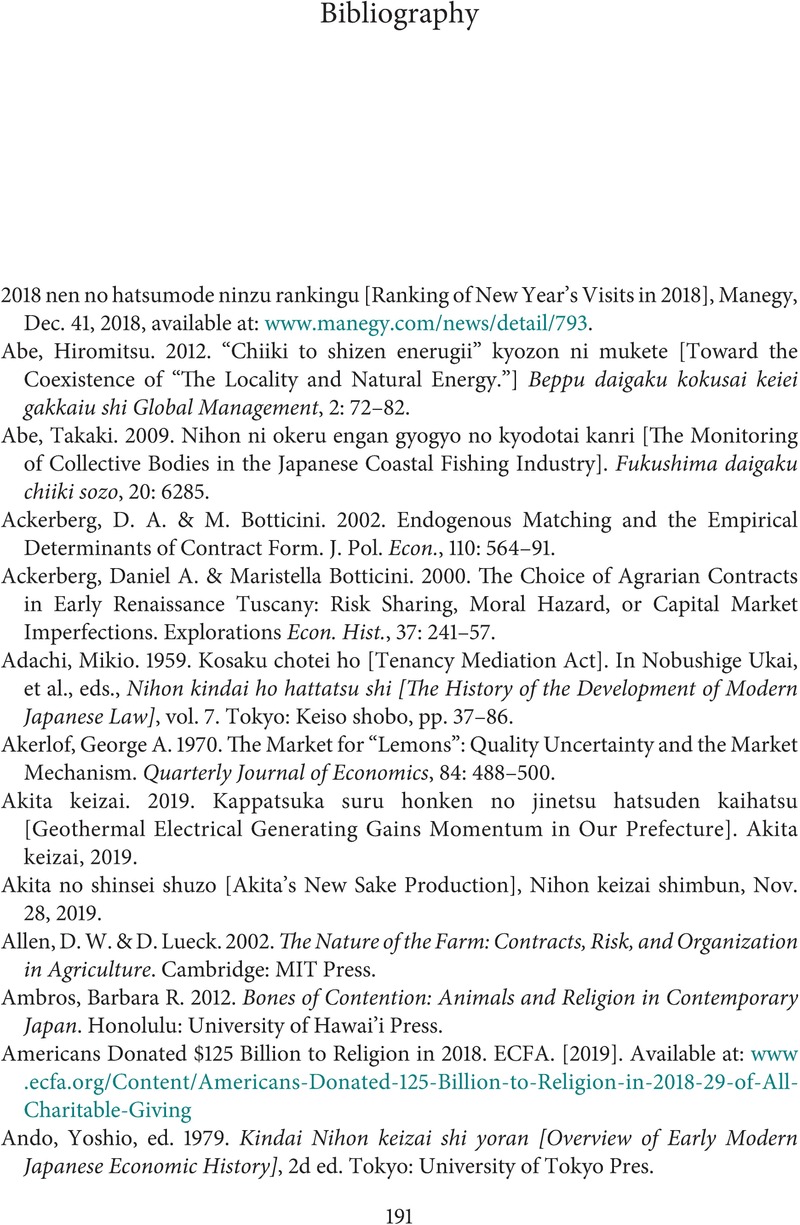 Contracting in Japan
Contracting in Japan Book contents
- Contracting in Japan
- Cambridge Studies in Economics, Choice, and Society
- Contracting in Japan
- Copyright page
- Dedication
- Contents
- Acknowledgments
- 1 Introduction
- 2 Contracting for Terroir in Sake
- 3 Contracting for Quality in Fish
- 4 Contracting for Geothermal in Hot Springs
- 5 Contracting for Credit in Agriculture
- 6 Contracting for Mercy in Buddhism
- 7 Conclusions
- Bibliography
- Index
- References
Bibliography
Published online by Cambridge University Press: 10 August 2023
- Contracting in Japan
- Cambridge Studies in Economics, Choice, and Society
- Contracting in Japan
- Copyright page
- Dedication
- Contents
- Acknowledgments
- 1 Introduction
- 2 Contracting for Terroir in Sake
- 3 Contracting for Quality in Fish
- 4 Contracting for Geothermal in Hot Springs
- 5 Contracting for Credit in Agriculture
- 6 Contracting for Mercy in Buddhism
- 7 Conclusions
- Bibliography
- Index
- References
Summary

- Type
- Chapter
- Information
- Contracting in JapanThe Bargains People Make When Information is Costly, Commitment is Hard, Friendships are Unstable, and Suing is Not Worth It, pp. 191 - 215Publisher: Cambridge University PressPrint publication year: 2023
